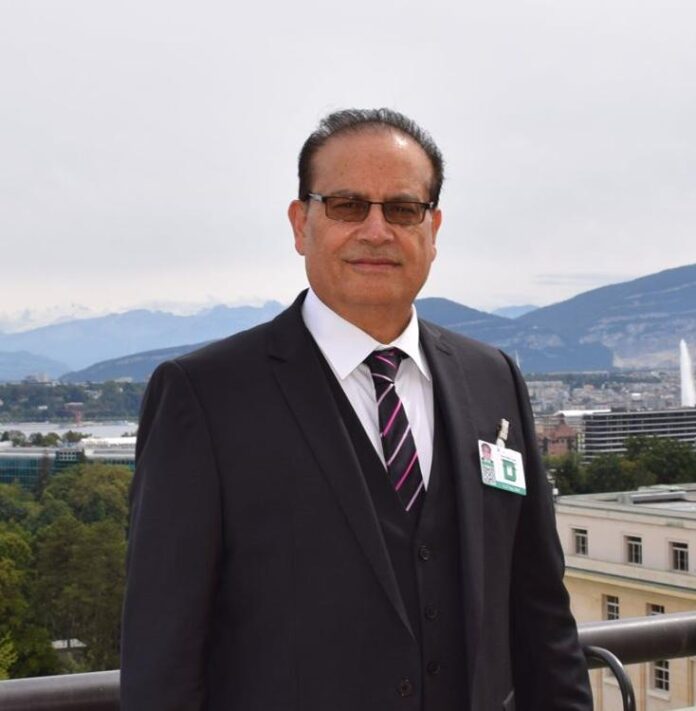The United States has once again entered a government shutdown, now in its third day, revealing both the fragility of its political system and the deep divisions between its ruling parties. For many Americans, the words “government shutdown” have become all too familiar, yet the implications remain complex and far-reaching. At its core, a shutdown occurs when Congress and the Senate fail to pass the necessary appropriations bills or a temporary funding measure known as a continuing resolution. Without legal authorization to spend money, vast swathes of the federal government grind to a halt, forcing hundreds of thousands of employees to be furloughed and others to work without pay. Essential services such as national security, law enforcement, and emergency medical care continue, but much of the rest—from processing tax returns to administering housing loans and maintaining national parks—comes to an abrupt pause.
The 2025 shutdown reflects not merely a budgeting dispute but a much larger clash of ideology and power. The immediate failure lies in Congress and the Senate’s inability to agree on a funding bill, but beneath that deadlock are deeper political contentions. Republicans, emboldened by President Donald Trump’s second term, have sought to tie spending approval to major policy demands. Among these are stricter border enforcement, deeper cuts to healthcare and social welfare programs, and renewed emphasis on energy independence through expanded oil and coal production. Democrats, meanwhile, insist on safeguarding Medicaid, Social Security, and green energy programs, while opposing what they see as reckless deregulation and authoritarian executive maneuvers. Both chambers are digging in, each claiming to defend the true interests of the American people, and the result is paralysis.
The contentious issues at the heart of this impasse are both economic and ideological. Healthcare remains one of the most explosive flashpoints, with Democrats accusing Republicans of trying to hollow out safety nets for the poor and elderly under the guise of fiscal responsibility. Immigration is another wedge issue: Trump has demanded increased funding for a fortified border system and deportation enforcement, positioning it as central to his “America First” agenda. Democrats counter that this amounts to cruelty and political theater, especially in the wake of unrest tied to immigration enforcement raids earlier this year. Climate and energy policy further complicate negotiations. Trump and his allies are determined to revive coal and oil drilling projects and reduce federal funding for renewable energy initiatives, while Democrats argue that reversing progress on climate goals would undermine both domestic innovation and international credibility.
In this standoff, both sides see political advantage. For Trump, the shutdown is an opportunity to reassert control and demonstrate strength. He portrays himself as a leader willing to withstand temporary pain for long-term national gain, casting the Democrats as obstructionists who prioritize ideology over patriotism.
For Democrats, the shutdown is also a weapon. They seek to paint Trump and the Republican majority as reckless extremists holding the country hostage for narrow political goals. By emphasizing the plight of unpaid federal workers, the closure of public services, and the disruption of families dependent on government programs, they aim to turn public opinion against Trump’s hardline tactics. Democrats calculate that the longer the shutdown lasts, the more ordinary Americans will grow frustrated and direct their anger at the White House, especially if essential services remain shuttered and the economy begins to slow.
The consequences, however, extend far beyond political point-scoring. For federal employees, a shutdown means immediate uncertainty and financial hardship. While history suggests that workers will eventually receive back pay, the delay leaves families struggling with mortgages, bills, and groceries. For contractors and businesses that rely on federal work, lost time is often never recovered. Consumer sentiment, already fragile in a climate of high tariffs and fluctuating prices, can sour further as Americans begin to feel the tangible impact of a government that appears unable to govern. The longer the shutdown drags on, the more anxious investors and households become, creating ripple effects that slow spending and investment across the economy.
Business confidence is equally shaken. In times of shutdown, routine government functions like issuing licenses, inspecting food safety, approving loans, and releasing economic data are suspended. For companies dependent on regulatory approvals or federal contracts, projects stall, costs rise, and uncertainty prevails. Global investors watch nervously as Washington broadcasts dysfunction to the world.
Relations with other countries also suffer. Diplomats find their budgets curtailed, international aid programs stall, and negotiations lose credibility when foreign leaders know the American government is paralyzed at home. For allies, the message is troubling: if Washington cannot manage its own internal disagreements, can it really lead global coalitions or enforce international agreements? For rivals, the spectacle offers propaganda material, reinforcing the narrative that American democracy is chaotic and incapable of coherent policy.
The economic cost of the current impasse grows with each passing day. Analysts estimate that the economy loses billions of dollars per week in output during a shutdown. Small businesses waiting for federal loans, infrastructure projects awaiting funding, and families dependent on childcare or nutrition programs all experience disruptions.
The longer-term damage may be even more significant. Confidence in institutions erodes with every shutdown, feeding public cynicism and polarization. When citizens watch politicians bicker while services collapse, trust in democracy itself weakens. The spectacle convinces Americans that partisan victory has become more important to leaders than effective governance. This erosion of trust threatens the fabric of civic life and makes compromise ever harder to achieve in the future. Beyond its borders, the United States risks diminishing its image as the global standard-bearer of democratic stability.
Ultimately, the current shutdown is not just about a budget but about two competing visions of America. One seeks a leaner government, tighter borders, and renewed emphasis on national sovereignty, even at the cost of disruption. The other envisions an inclusive, service-oriented state that maintains a global leadership role and invests in future generations.
The shutdown will eventually end, as they always do, through compromise or exhaustion. Yet the scars it leaves behind—in lost income, shaken confidence, delayed projects, and frayed international credibility—will linger. What remains most troubling is that shutdowns are no longer rare accidents but recurring episodes in American political life, symptomatic of deeper dysfunction. Unless the nation’s leaders rediscover the will to compromise, each new budget cycle risks becoming another crisis, another shutdown, and another reminder to the world that the American system, once admired for its resilience, now struggles under the weight of its own divisions.
By Qamar Bashir
Press Secretary to the President (Rtd)
Former Press Minister, Embassy of Pakistan to France
Former Press Attache to Malaysia
Former MD, SRBC | Macomb, Michigan, USA

















